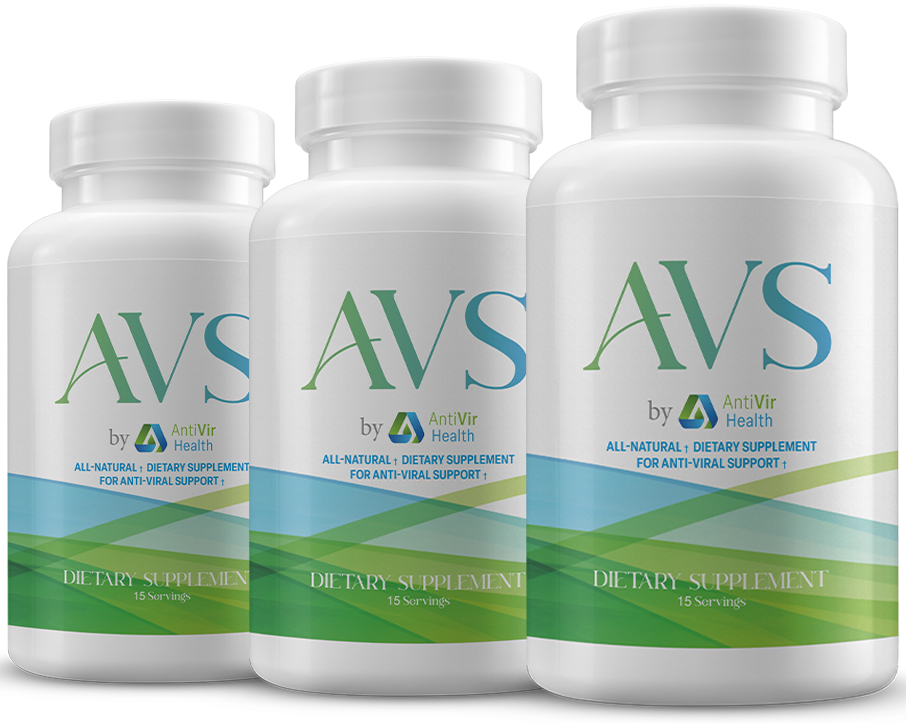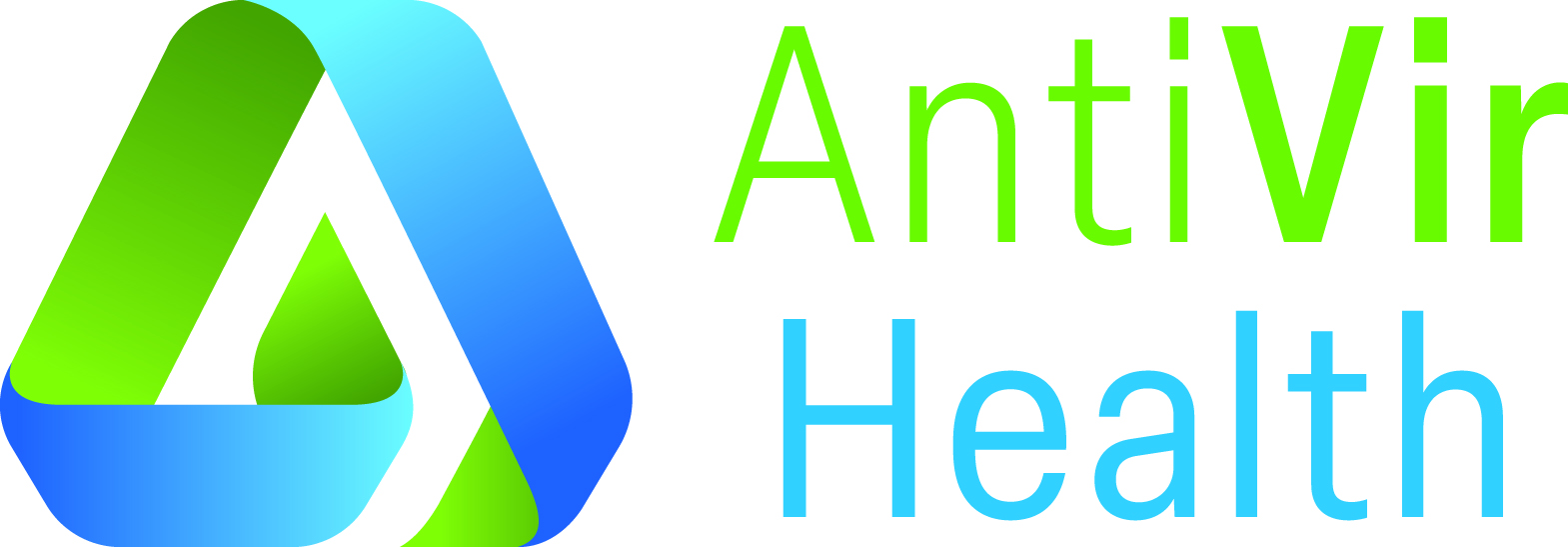AVS Benefits
Our company mission is to formulate and deliver all-natural, organic, made-in-nature, supplements.
The organic natural ingredients of AVS are currently optimized for SARS-CoV-2, but may be effective with other viruses as well, even before further optimization, such as:
- COVID-19 virus (SARS-CoV-2), and extinct SARS-CoV and MERS viruses
- Influenza viruses (influenza A, influenza B, influenza C, avian flu, parainfluenza)
- Common cold coronaviruses (HCoV-229E, HCoV-OC43, HCoV-NL63, HCoV-HKU1)
- Hepatitis viruses (hepatitis A, hepatitis B, hepatitis C, hepatitis D, hepatitis E, hepatitis G)
- AIDS virus (HIV-1)
- "Exotic" viruses (Dengue fever, West Nile, Zika, Nipah, Ebola, Marburg, Crimean-Congo hemorrhagic fever), etc.
AVS comprises bioactive ingredients that bind to and inactivate:
- Spike Proteins
- Spike Protein Receptors
- Cells Entering Mechanisms
- Multiple Virus Replication Stages Inside Human Cells.
SARS-CoV-2 infection can be roughly divided into three stages:
COVID-19 infection stages are visualized at Inés Colmegna et al., “MSM Insights: Is there a role for cell therapy in SARS-CoV-2 infection?” https://mrm.research.mcgill.ca, based on Hasan K. Siddiqi et al., “COVID-19 illness in native and immunosuppressed states: A clinical−therapeutic staging proposal,” The Journal of Heart and Lung Transplantation, Volume 39, Issue 5, March 2020, 405-407, https://doi.org/10.1016/j.healun.2020.03.012, JIF 13.569 (top 2% journals in Surgery, top 4% journals in Transplantation and top 8% journals in Respiratory System).
SARS-CoV-2 infection can be roughly divided into three stages:
Stage I (mild) – an asymptomatic incubation period with or without detectable virus
The initial stage occurs at the time of inoculation and early establishment of disease. For most people, this involves an incubation period associated with mild and often non-specific symptoms, such as malaise, fever, and a dry cough. During this period, SARS-CoV-2 multiplies and establishes residence in the host, primarily focusing on the respiratory system. Similar to its older relative, SARS-CoV (responsible for the 2002−2003 SARS outbreak), SARS-CoV-2 binds to its target using the angiotensin-converting enzyme 2 receptor on human cells. These receptors are abundantly present on human lung and small intestine epithelium and the vascular endothelium. As a result of the airborne method of transmission and affinity for pulmonary angiotensin-converting enzyme 2 receptors, the infection usually presents with mild respiratory and systemic symptoms.
Stage II (moderate) – non-severe symptomatic period with the presence of virus
In the second stage of established pulmonary disease, viral multiplication and localized inflammation in the lung are the norm. During this stage, patients develop a viral pneumonia, with cough, fever, and possibly hypoxia (defined as PaO2/FiO2 < 300 mm Hg). Imaging with chest roentgenogram or computed tomography reveals bilateral infiltrates or ground glass opacities. Blood tests reveal increasing lymphopenia, along with transaminitis. Markers of systemic inflammation may be elevated, but not remarkably so. It is at this stage that most patients with COVID-19 would need to be hospitalized for close observation and management. Thus, Stage II disease should be sub-divided into Stage IIa (without hypoxia) and Stage IIb (with hypoxia).
Stage III (severe) – severe respiratory symptomatic stage with high viral load and a cytokine storm (systemic hyperinflammation)
A minority of COVID-19 patients will transition into the third and most severe stage of the illness, which manifests as an extrapulmonary systemic hyperinflammation syndrome. In this stage, markers of systemic inflammation seem to be elevated. COVID-19 infection results in a decrease in helper, suppressor, and regulatory T cell counts. Studies have revealed that inflammatory cytokines and biomarkers such as IL-2, IL-6, IL-7, granulocyte colony-stimulating factor, macrophage inflammatory protein 1-a, tumor necrosis factor-a, C-reactive protein, ferritin, and D-dimer are significantly elevated in those patients with more severe disease. Troponin and N-terminal pro B-type natriuretic peptide can also be elevated. A form akin to secondary hemophagocytic lymphohistiocytosis may occur in patients in this advanced stage of the disease. In this stage, shock, vasoplegia, respiratory failure, and even cardiopulmonary collapse are discernable. Systemic organ involvement, even myocarditis, would manifest during this stage.
AVS formula tries to increase the immune response during the first two stages, and suppress it in the third stage in order to counterbalance inflammatory activity. Therefore, multiple ingredients are required to fight the virus in aforementioned three stages.
The spike protein or its fragments can circulate in the body after COVID-19 infection or after COVID-19 vaccination and cause inflammation and blood clotting in any part of the body where they accumulate.
Inflammation can develop diabetes and cancer according to listed scientific papers.
AVS ingredients additionally have the following properties:
- Anti-inflammatory
- Anti-cancer
- Anti-diabetic
- Anti-thrombosis
- Anti-hypertension
- Anti-atherosclesoris
- Anti-cardiovascular diseases
- Anti-endothelial cell dysfunction
- Anti-heart failure
- Anti-oxidative stress
- Many other medicinal properties, and can be used against cardiovascular diseases.


AVS may help in:
Virus Infection prevention
Home treatment of virus infection
Outpatient (in hospital treatment of virus infection without overnight stay
Inpatient (in hospital) treatment of virus infection with overnight stay
Post-recovery after virus infection (e.g. Long COVID)
Minimization of side effects of drugs
Minimization of side effects from vaccines
